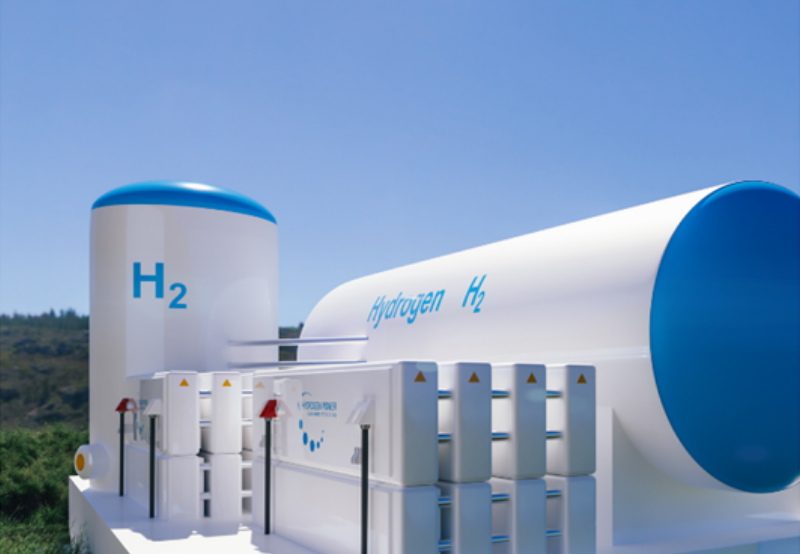At the end of July 2022, the Egyptian cabinet issued a statement announcing signing a Memorandum of Understanding (MoU) with India’s renewable energy company, ReNew Power, to build a green-hydrogen production facility in the Suez Canal Economic Zone, in a deal worth $8 billion.
The announcement comes on the tails of several multi-billion dollar deals with energy companies from across a range of countries, including, in addition to India, the UAE, France, and Norway, to build green hydrogen facilities in Egypt, particularly in the Suez Canal zone. The goal? Turning Egypt into a green energy hub and powerhouse in the region and the world, which is not only expected to be lucrative if fully realized, but will also move the country forward in its journey to achieve crucial SDGs.
But what is green hydrogen? It is a relatively new concept of generating hydrogen through renewable energy sources, producing significantly lower carbon emissions than other ways of producing hydrogen.
According to the 2021 report, the International Energy Agency (IEA) said that there are now 300 megawatt of green-hydrogen capacity in the world, which is very modest compared to other energy sources. The IEA laid down a roadmap that will take the world’s production to 80 million tons by 2050, which will contribute greatly to the climate battle, and also present a golden opportunity for countries like Egypt to lead production in such a promising sector.
Is there real potential for Egypt?
“There’s a very strong will from different stakeholders in Egypt to develop green hydrogen,” said Yassin Yehia Rady, senior business development advisor at Energean Egypt. “There are a lot of agreements that have been signed, and many multinational organizations and investors that are interested to develop such projects in Egypt, particularly due to the availability of renewable energy sources.”
However, like any new innovation, green hydrogen is relatively costly compared to other energy sources. As it stands, it costs between $3 to $8 to produce one kilogram of green hydrogen, which could prove a major obstacle to Egypt.
Aside from cost, for it to be a viable industry, producing green hydrogen needs to go hand-in-hand with the Egyptian economy transitioning to becoming a low-carbon one, according to Rady.
“For Egypt to make use of such industry, a green hydrogen economy should be established (in Egypt). If we want a hydrogen economy, we have to bring not only the production technology but also the consumption; the Egyptian economy needs to be transformed into a low-carbon economy.”
Must do’s
But why isn’t it not enough to produce and export green hydrogen while Egypt slowly moves its economy towards low-carbon sources? “The global climate crisis has no boundaries, so from a thermodynamic point of view, you could be producing one kilogram of green hydrogen here to be used to satisfy international demand. You can then export it to California, but then you consume more fuel to transport it. Unlike if you use it in Egypt, you can then avoid this extra consumption of non-clean energy,” explained Rady.
In simpler terms, the local and nearby markets should be the primary users of green hydrogen for it to be truly green and not void its main purpose. But with it being relatively costly, how can the local market be pushed into adopting green hydrogen?
“The first thing is to develop a strategy and road-map for the energy system; policy-makers should work to raise awareness and create demand for locally produced green hydrogen,” explains Rady. “We also need to create incentive to use low-carbon hydrogen in the local market. Including hydrogen in public procurement, for example, will create a very clear incentive for investors to come and invest in such industry.”
Then comes the question of infrastructure which Egypt needs to contemplate. “Do we have the storage tanks, ships ready to move this commodity to international markets? Or will we face a bottleneck in the supply chain?,” wonders Rady. “Most importantly, we need to be supporting research and development innovation to ensure that critical technologies are progressing [and hence, getting cheaper].”
Lost opportunity cost?
Seeing that green hydrogen production is costly, time-consuming, and technology-reliant, should Egypt be investing in it at all? Are there better alternatives?
“We’re living in an energy transition; we’re shifting from fossil fuels to more sustainable energy sources. So the change is coming anyways, and if we’re not starting today to bring up such solutions, we’ll lag behind in the future,” asserts Rady.
It’s not only Egypt trying to become a regional and global hub for green hydrogen production, but also the world’s biggest oil producer, and Egypt’s neighbor, Saudi Arabia, which is en-route to exporting carbon-free hydrogen by 2026, according to Bloomberg. Will this complement Egypt’s green hydrogen ambitions or potentially set them back?
“There’s competition in any market; who will win in the end would be the one who has the best innovation, accessibility to cheap finance, and, most importantly, those who are fast in enacting laws and policies to realize the low-carbon economy,” predicts Rady.
Blue or green?
Alongside green hydrogen, Rady also sees huge, more quickly-rewarding potential in blue hydrogen, which is hydrogen produced from natural gas which Egypt has an abundance of – making it a more rewarding alternative in the short-term.
“Blue hydrogen is still more important [to Egypt] than green hydrogen because the cost of green hydrogen is too high in comparison. Egypt has a good potential to be a producer for blue hydrogen because we have good capacity of reservoirs for blue hydrogen,” argues Rady.
All-in-all, Egypt seems to have all necessary inputs to establish a significant presence in the green hydrogen market of the future, and push its own economy towards this environmental energy source. But with increased competition, high production cost, needed policy changes, and improved infrastructure and research, will Egypt realize it goals and come on top of the global drive towards carbon-less, green hydrogen? This remains to be seen.









